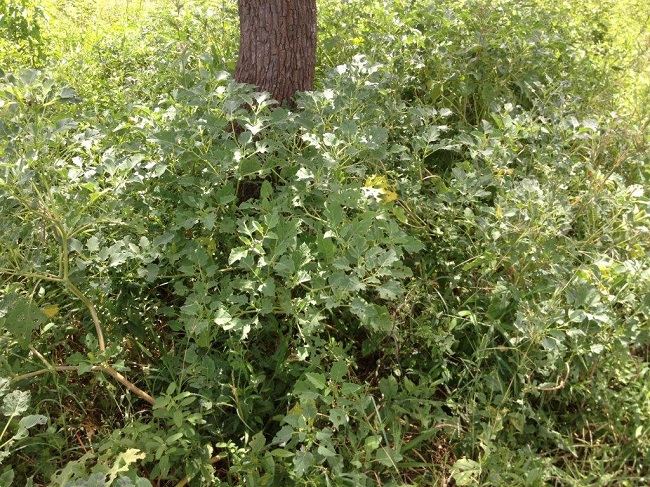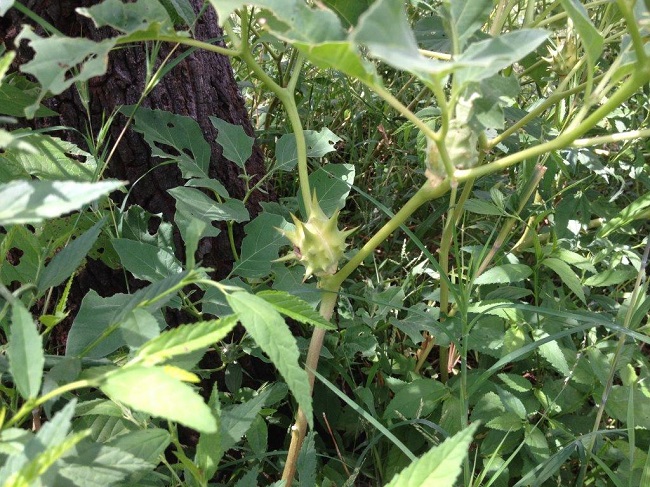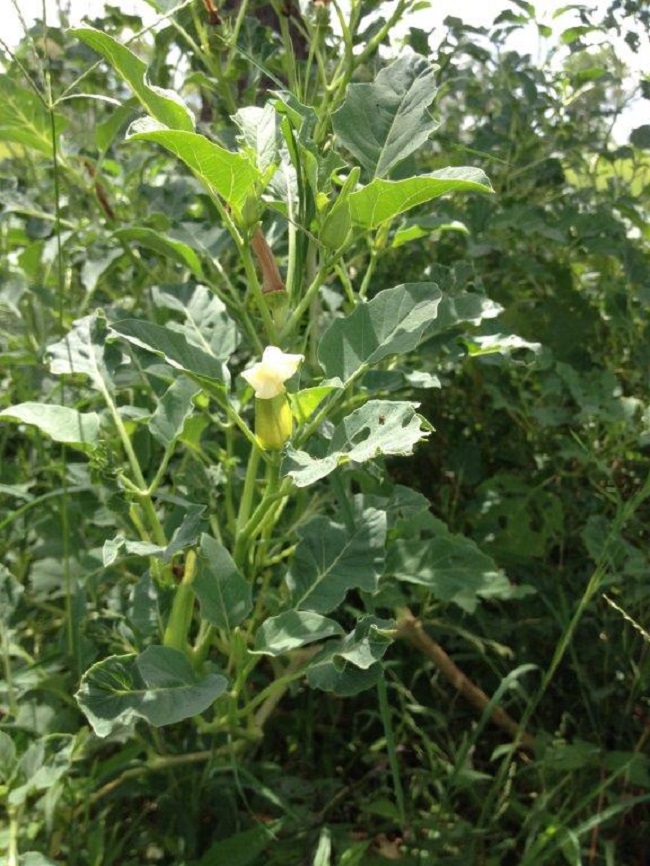Thornapple
Scientific name: Datora ferox
Declaration status: Class A
Thornapples are native to Central and South America and Mexico, and are also known to occur in Asia and North Africa.
It was introduced to Australia as a garden plant, and is still closely associated with human settlements in the Northern Territory.
It has been used for medicinal purposes.
Thornapples prefer disturbed sites and fertile soils such as stock camps, around bores, stockyards and stables and along riverbanks.
Small infestations occur around bores, stockyards, and stables in the Katherine, Victoria River and Gulf districts.
For more information, get the thornapple identification fact sheet PDF (571.0 KB).
Impact
Thornapple can have all of the following impacts:
- the fruits have alkaloids that are potentially toxic
- there are records of pig, horse, poultry and human deaths
- toxicity to stock varies
- cattle appear to eat it without suffering any effects
- competes with native plant species and reduced available food for native animals
- has the potential to impact fire frequency and intensity.
Identification
You should use this as a guide. There may be other plants or weeds that look similar.
- erect, branched, annual plant that grows to about 1m tall with smooth stems
- leaves are lance or oval shaped, up to 15cm long and have toothed margins and pointed lobes
- trumpet-shaped flowers with white petals, 6cm to 10cm long
- single flowers grow in the forks of the branched stems
- fruit is round, spiny and green, 4cm to 5cm in diameter with four compartments containing numerous brown to black kidney shaped seeds.
If you are unsure, contact the Weed Management Branch.
Similar looking plants
There are four similar looking varieties of thornapples:
- longspine
- downy
- hairy
- native.
There is no harm in controlling any of the latter three species and it is imperative that the longspine thornapple is controlled.
Control
If you think you may have seen thornapple, or have this weed on your property, contact the Weed Management Branch immediately for assistance.
Chemical control
The best time to treat thornapple is from December to March. Below is a list of treatment methods that can be used.
| Chemical and concentration | Rate | Situation, method and notes |
|---|---|---|
|
2, 4-D amine 625g/L Various trade names | 320ml / 100L |
Seedling or adult (individuals or infestation): Foliar spray - apply when actively growing |
|
Glyphosate 360g/L Various trade names and formulations | 15ml / 1L |
Seedling or adult (individuals or infestation): Foliar spray - apply when actively growing |
|
MCPA 340g/L and Dicamba 8g/L Various trade names | 350ml / 100L |
Seedling or adult (individuals or infestation): Foliar spray |
|
Fluroxypyr 200g/L Various trade names | 1 L / 100L |
Seedling (individuals or infestation): Foliar spray - Uptake® spraying oil required |
|
Fluroxypyr 333g/L Starane® Advanced |
450ml / ha (boom) |
Seedling (individuals or infestation): Foliar spray - Uptake® spraying oil required Boom application - apply when actively growing |
Non-chemical control
Hand pulling and grubbing
Weeds, including their roots, are pulled out of the ground by hand or using hand tools.
This is an effective method of control for individual weeds and recent outbreaks that haven’t released seeds yet, but it requires a lot of labour.





